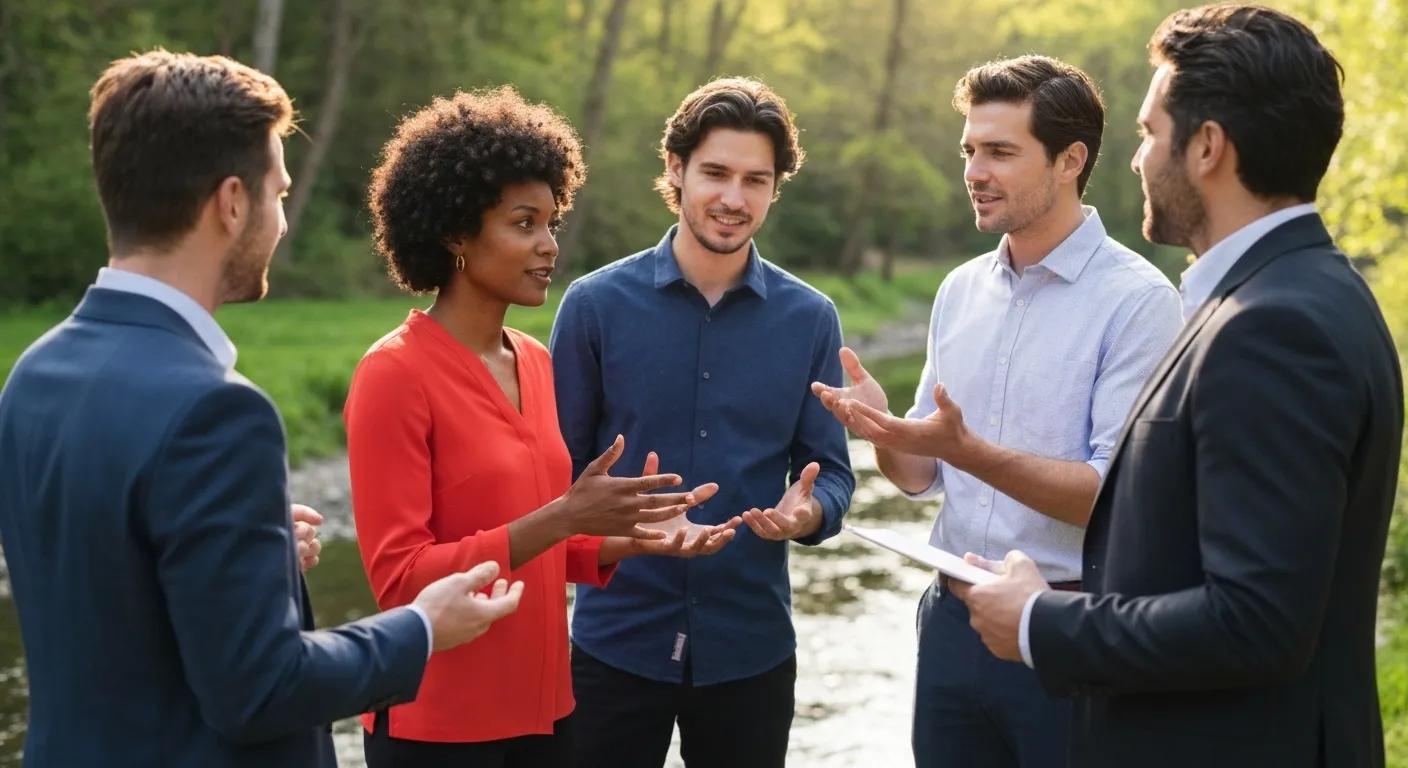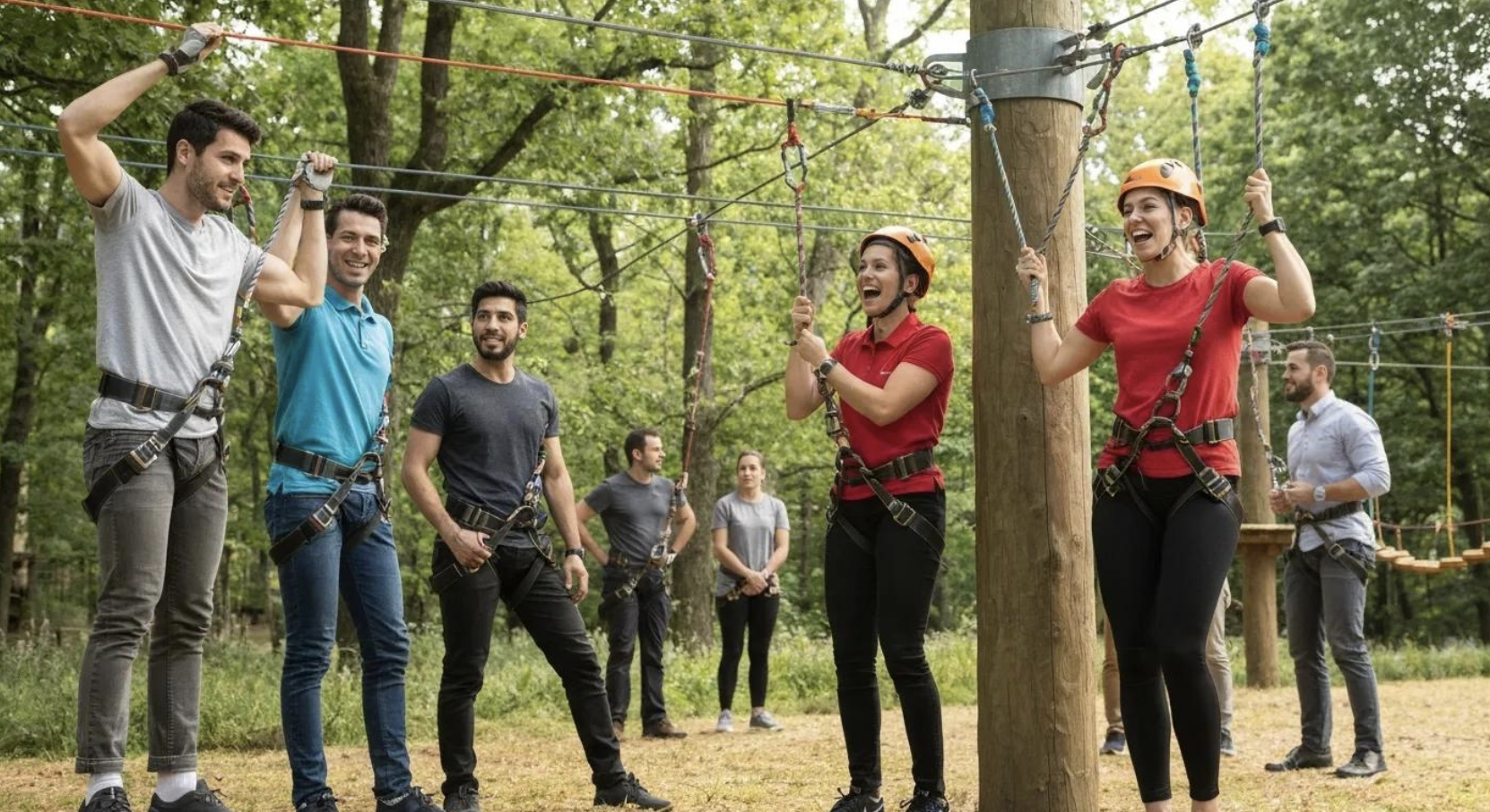What truly elevates a corporate team’s resilience and problem-solving capacity beyond boardroom training? Outdoor leadership challenges harness natural environments to foster communication, trust and strategic thinking through experiential tasks that mirror workplace dynamics. This article unpacks the core concepts of Outdoor Leadership Challenges and reveals:
- How these challenges build cohesion and skill
- Which activities drive measurable transformation
- The experiential learning framework behind our programs
- Critical safety measures for peak performance
- Real-world case studies demonstrating business impact
By mapping these themes, companies gain a clear path from concept to corporate performance boost.
What Are Outdoor Leadership Challenges and How Do They Build Teams?
Outdoor leadership challenges are structured activities in natural settings that define clear objectives, require collaboration and demand adaptive thinking to solve real-time problems. By simulating workplace pressures in fresh environments, these challenges improve team cohesion through shared experiences of risk, achievement and reflection. For example, a ropes course exercise tests communication under stress, encouraging teams to innovate together. This approach sets the stage for exploring the most effective challenge varieties and their direct impact on trust.
What Types of Outdoor Leadership Challenges Are Most Effective?
Outdoor leadership challenges encompass a range of formats designed to address specific team development goals. Effective types include rope-based tasks for collaboration, wilderness expeditions for leadership under uncertainty and scenario-based simulations that sharpen decision-making.
| Challenge Type | Core Objective | Typical Outcome |
|---|---|---|
| High Ropes Course | Collaboration under tension | Clear role allocation and support |
| Wilderness Expedition | Leadership in uncertainty | Strategic decision-making |
| Problem-Solving Scenario | Creative teamwork | Innovative solutions under pressure |
These challenge types each develop critical skills that feed into communication and trust enhancements in subsequent activities.
How Do Outdoor Activities Enhance Team Communication and Trust?

Outdoor activities enhance communication by creating situations where verbal clarity and nonverbal cues are equally vital. They build trust as team members rely on one another’s guidance during complex tasks. Key benefits include:
- Improved listening skills through guided debriefs
- Heightened mutual support when facing physical or mental obstacles
- Transparent feedback loops during reflective sessions
By strengthening dialogue and dependability, teams enter transformation-focused challenges with a solid foundation of trust.
Team Building and Communication
Outdoor activities can significantly improve team communication and trust. Challenges that require collaboration and shared problem-solving foster better communication skills and strengthen relationships among team members, leading to improved team cohesion and performance.
Gass, M. A., & Priest, S. (2012). Effective leadership in adventure programming. Human Kinetics.
This citation reinforces the article’s claims about the positive impact of outdoor challenges on team dynamics.
Which Outdoor Leadership Challenges Deliver Measurable Team Results?

Yes, specific Outdoor Leadership Challenges yield quantifiable improvements in team dynamics, productivity and leadership capacity. By tracking pre- and post-event metrics—such as decision-making speed and peer-rated collaboration—ZOVBSG ensures transparent ROI on every program.
How Do High Ropes Courses Develop Problem-Solving and Collaboration Skills?
High ropes courses immerse teams in elevated tasks that require precise coordination and shared responsibility. These activities develop problem-solving by:
- Presenting physical obstacles that demand collective planning
- Reinforcing adaptability when initial strategies fail
- Encouraging peer coaching during debriefs
Participants emerge with sharpened collaborative instincts and a clear method for tackling complex projects back at the office.
What Leadership Skills Are Gained from Wilderness Expeditions?
Wilderness expeditions cultivate strategic leadership by placing individuals in unpredictable environments that mirror market volatility. Typical skill gains include:
- Risk assessment and contingency planning
- Decisive action under shifting conditions
- Empowering others through situational leadership
These expeditions translate directly into confident, resilient leadership behaviors within corporate structures.
How Does Experiential Learning Shape Our Outdoor Leadership Programs?
Experiential learning in outdoor settings relies on active problem solving, reflective observation and concept application to solidify leadership insights. This method ensures theoretical models become lived experiences that teams can recall and apply in workplace scenarios.
What Are the Principles of Experiential Learning in Outdoor Settings?
Experiential learning rests on four interconnected stages:
- Concrete experience in challenge tasks
- Reflective observation during guided discussions
- Abstract conceptualization linking activity to workplace lessons
- Active experimentation in follow-up projects
By cycling through these stages, teams internalize leadership concepts far more effectively than in passive training formats.
Benefits of Experiential Learning
Experiential learning, particularly in outdoor settings, has been shown to enhance leadership skills and team performance. This approach allows participants to apply theoretical concepts in practical, real-world scenarios, leading to deeper understanding and retention of leadership principles.
Kolb, D. A., Experiential learning: Experience as the source of learning and development (1984)
This research supports the article’s emphasis on experiential learning as a key component of effective outdoor leadership programs.
How Is Custom Program Design Tailored to Corporate Team Needs?
ZOVBSG customizes each program by aligning challenge complexity, location and duration to specific corporate objectives. This begins with a needs assessment and continues through tailored scenario creation and venue logistics—including equipment options derived from Zovbsg’s “facility rental rates” for site planning. Such bespoke design maximizes relevance and engagement, leading teams seamlessly into safe, transformative experiences.
What Safety Measures Ensure Successful Outdoor Leadership Challenges?
Effective safety measures in outdoor leadership programs combine professional oversight with proactive risk management to safeguard both physical and psychological well-being. These protocols build confidence that teams can focus on learning rather than hazards.
How Do Professional Facilitators Manage Outdoor Program Safety?
Professional facilitators manage safety by:
- Conducting thorough site risk assessments before each event
- Implementing real-time monitoring of environmental and participant conditions
- Enforcing clear stop-work signals and emergency response drills
This vigilant approach allows teams to engage fully, knowing every precaution is in place.
What Risk Management Practices Are Used in Outdoor Team Building?
Risk management practices integrate standardized checks and responsive procedures to maintain safe conditions at all times:
| Protocol | Purpose | Implementation |
|---|---|---|
| Equipment Inspection | Ensure gear reliability | Pre-event maintenance logs and certifications |
| Weather Contingency Plans | Protect against environmental threats | On-site monitoring and adaptive scheduling |
| Medical Response Training | Rapid assistance in emergencies | Facilitator first-aid certification and kits |
These measures underpin a secure environment, enabling teams to concentrate on leadership growth rather than safety concerns.
How Have Teams Transformed Through Outdoor Leadership Challenges?
ZOVBSG’s programs consistently yield visible performance gains by harnessing the power of outdoor experiential learning. Measurable improvements span communication rates, project completion speed and leadership confidence.
What Results Did Our Tech Company Client Achieve After Wilderness Challenges?
A leading tech firm recorded a 35 % increase in cross-departmental collaboration and a 20 % reduction in project turnaround time following a three-day expedition. Participants cited enhanced clarity in role responsibilities and greater trust in remote team settings.
How Do Outdoor Challenges Impact Sales and Performance Metrics?
Outdoor challenges directly improve business outcomes through:
- Enhanced negotiation skills leading to a 15 % sales lift
- Boosted problem-solving agility reflected in faster client issue resolution
- Elevated team morale correlated with a 10 % dip in turnover intentions
These metrics demonstrate that immersive leadership experiences translate into tangible corporate performance gains.
Corporate teams seeking transformative outcomes can leverage OneD Team Building’s Outdoor Leadership Challenges to drive lasting behavioral and organizational change.
Teams emerge equipped with stronger collaboration strategies, resilient leadership approaches and measurable performance uplift—empowering companies to outperform in today’s competitive landscape.








